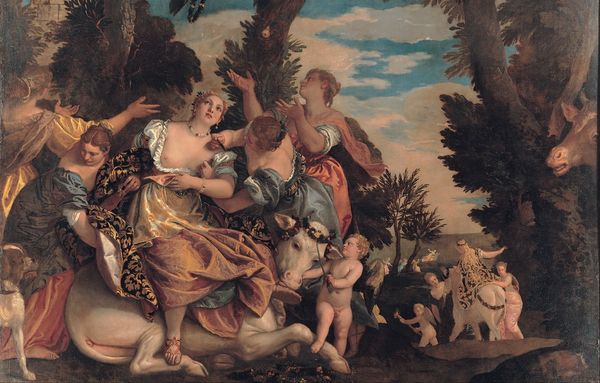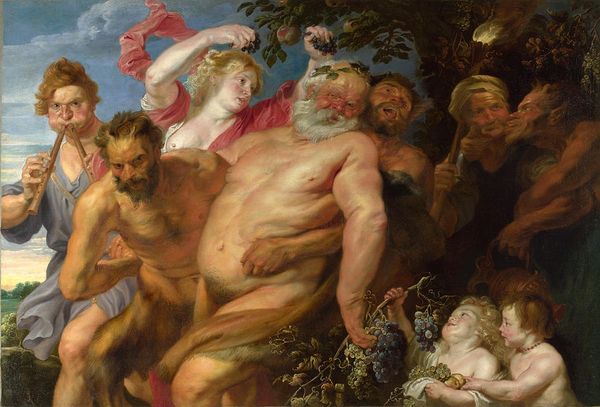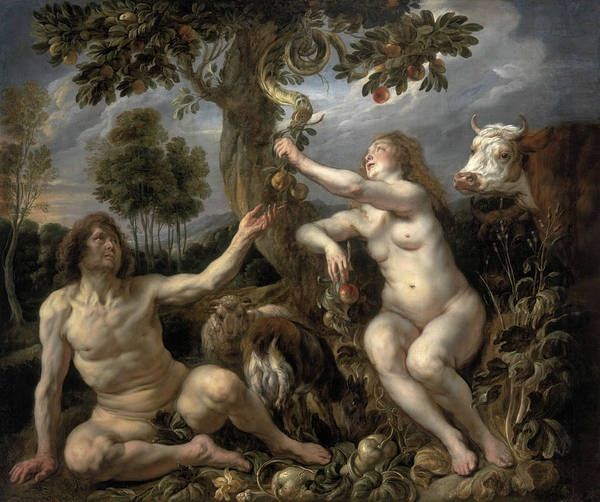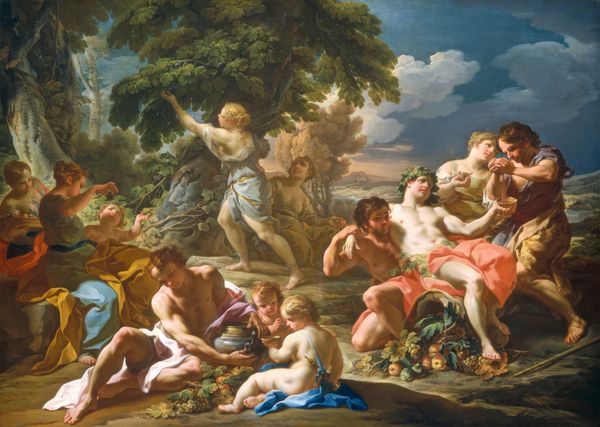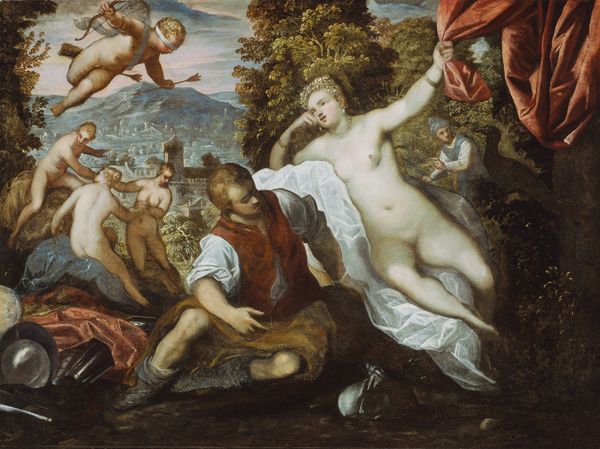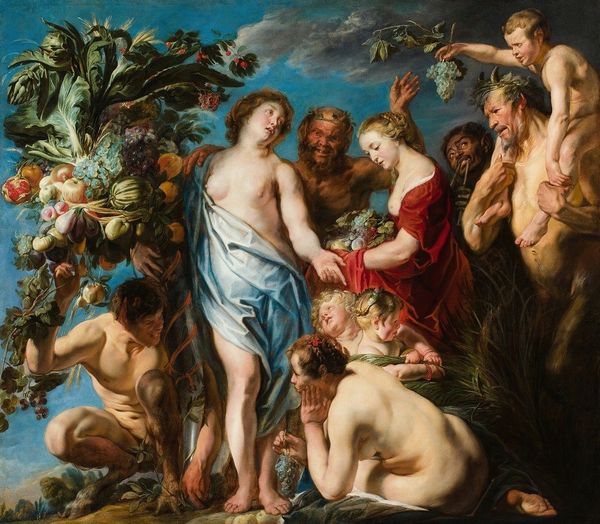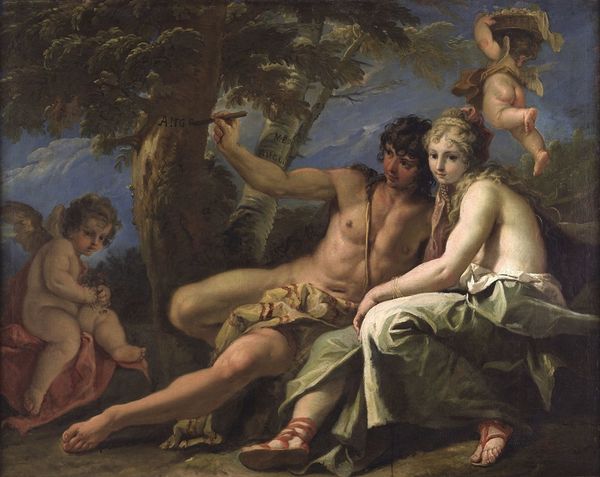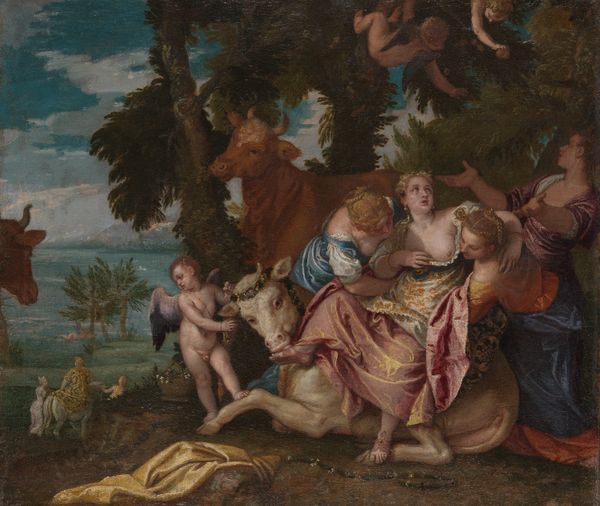
painting, oil-paint
#
allegory
#
painting
#
oil-paint
#
mannerism
#
oil painting
#
history-painting
Dimensions: 65 1/2 × 48 in. (166.5 × 121.9 cm)
Copyright: Public Domain
Curator: Standing before us is Giorgio Vasari's "The Temptation of Saint Jerome," likely created between 1541 and 1548. It's a fantastic example of Mannerist painting. Editor: It strikes me as chaotic, almost a sensory overload. So many figures, so much detail crammed into one canvas. What do we know about the commissioning context for a piece like this? Curator: The piece likely served a didactic purpose within a religious institution, showcasing the moral struggle of Saint Jerome. Vasari, as a figure deeply entrenched in Florentine artistic and political circles, would have understood how to cater to the prevailing tastes and ideologies. Notice how Vasari emphasizes the musculature. The figure’s struggle is visualized through the tense, almost exaggerated forms. Editor: Absolutely. Look at the oil paint he’s layering, the almost sculptural quality of the figures emerging from the landscape. The sheer labor involved is immense, but that material excess speaks to the patron's status as much as it reflects spiritual yearning. But does that abundance distract from the devotional aim? Curator: Not necessarily. This abundance underscores the intensity of temptation, a central theme in Counter-Reformation art. This piece exemplifies Mannerism's characteristic artifice, where the artificial takes precedence over realistic representation to emphasize emotion and meaning. Consider also how institutions like the Church used imagery to reassert their authority. Saint Jerome’s story becomes a symbol of steadfast faith in the face of seductive distractions. Editor: I agree that this is more than just craft; this image embodies power relations of the era, reflecting anxieties and control. It invites audiences into the world of early modern Florence, while showcasing the opulence used to solidify religious ideas. I’m now pondering all the steps needed for creating such a monumental object and its reception. Curator: Indeed. It makes one consider what was important enough in history to be recreated in art and remain relevant to contemporary audiences. Editor: A potent reminder of how art shapes—and is shaped by—its world.
Comments
No comments
Be the first to comment and join the conversation on the ultimate creative platform.

